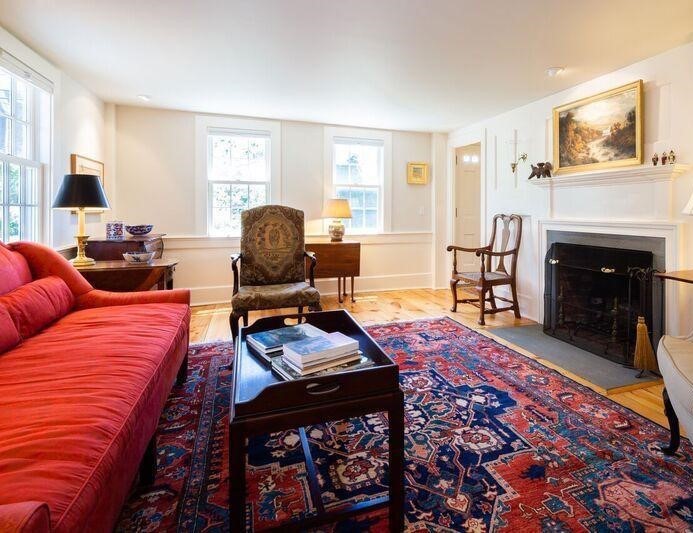The terms Oriental and Persian rugs are often used interchangeably, but they actually don’t mean the same.
Oriental carpets for sale include all the floorcoverings and rugs made in Asia, including those made in Persia or the modern-day Iran. In a sense, Persian rugs come under the category of Oriental rugs.

The Key Difference Between Persian and Oriental Carpets
Like most other handmade rugs, Persian rugs are named after their place of origin. These rugs come under the umbrella of Oriental carpets, which means you can refer to a Persian rug as an Oriental carpet, but not the other way around.
In other words, all Persian rugs are Oriental carpets, but not all Oriental carpets are Persian.
Why do Persian rugs have so much significance then?
That’s because handmade Persian rugs are thought to be of the finest quality among all the types of Oriental carpets and this factor has added to their popularity.
Types of Oriental and Persian Rugs
Oriental carpets include rugs that are made in Afghanistan, Turkey, India, China, Tibet, Pakistan, Iran, Nepal and Russia. These rugs are divided into various different types, named mostly after the place of their origin, such as Pakistani rugs, Persian rugs, Baluchi rugs, etc.
Oriental carpets come in a wide range of different styles and design patterns, from rugs with geometric patterns to intricate floral motifs, and from all-over pattern rugs to carpets with a central medallion. At times, Oriental carpets from different regions are starkly different from one another in their overall look.
For example, rugs made in China by the Chinese craftsmen depict the culture and religious beliefs of the weavers through floral patterns and traditional motifs, such as the dragon motif. On the other hand, Pakistani Oriental carpets are dominated more by geometric patterns and tribal designs that depict the culture of the South Asian subcontinent.
Many rugs made in Pakistan, Turkey and India also have a religious vibe to them, such as the Prayer rugs used by Muslims for their daily five-time prayers.
Persian rugs also have various types, some of the most popular ones being Mahal rugs, Gabbeh rugs, Isfahan rugs, and Bakhtiar rugs. The patterns of these rugs have influenced the work of craftsmen from India and Pakistan as well, hence there is a close resemblance between some types of Persian and Pakistani rugs. Moreover, Pak-Persian rugs are also a thing!
The Weaving Techniques
Hand-knotted Oriental carpets from different countries are crafted using different weaving techniques. Oriental carpets are often hand-knotted using the traditional Ghordies knots. These knots are symmetrical in comparison to the asymmetrical weaving technique or the Senneh knot used in the making of Persian rugs.
Although there is a difference in the way these rugs are woven or knotted, both the Persian rugs and the Oriental carpets are completely handmade from scratch by the rug weavers. Hence, the Oriental rugs for sale are highly valuable and long-lasting.
The Materials Used in Persian and Oriental Carpets
Wool is the most popular rug material for handmade Oriental and Persian rugs. The kind of wool used depends upon the region where the rug was crafted. Additionally, the foundation of most Oriental carpets is made of cotton, but some have a wool foundation too.
Why is there a difference in the materials of the rugs used?
In the early days, members of nomadic tribes made rugs to fulfill their basic domestic needs and used the materials available to them easily. Depending on the region of a rug’s origin, the materials varied from wool to cotton or silk, even camel and goat hair were used by weavers of some Asian regions.
Among the different types of Oriental carpets for sale available in the market, wool handmade rugs are the most popular ones. That’s because only the finest quality wool is used by Asian weavers to make hand-knotted or handwoven Oriental carpets.
Wool Oriental rugs are highly-durable for various reasons. Firstly, because the hand-knotted Oriental carpets often have a high Knots Per Square Inch (KPSI) count, this high knot density adds to the rug’s quality and makes them increasingly long-lasting. Secondly, wool is stain-resistant and wool rugs are easy to clean as compared to the rugs made using artificial materials.
In addition to this, handmade wool Oriental carpets are made by master weavers who have not learnt, rather inherited the art of weaving from their ancestors and work for long hours every day to keep it alive.
All in all, Persian and Oriental carpets are not the same, although they do possess a lot of similarities, including the materials used in their weaving. But, their weaving techniques, color combinations, and design patterns vary greatly from one another.
But, if you’re looking to find the perfect rug for your living room, searching in the category of Oriental rugs can be a better option than just looking at Persian carpets, unless you really want a Persian design rug.













